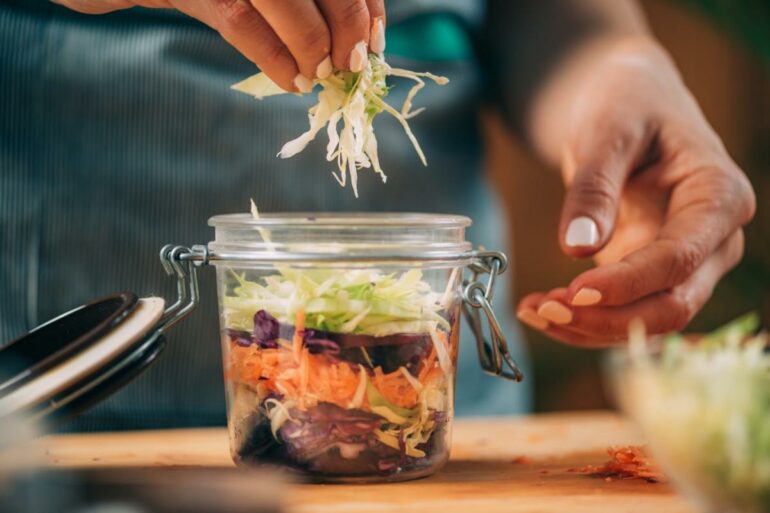Many people around the world make and eat fermented foods. Millions in Korea alone make kimchi. The cultural heritage of these picklers shape not only what they eat every time they crack open a jar but also something much, much smaller: their microbiomes.
On the microbial scale, we are what we eat in very real ways. Your body is teeming with trillions of microbes. These complex ecosystems exist on your skin, inside your mouth and in your gut. They are particularly influenced by your surrounding environment, especially the food you eat. Just like any other ecosystem, your gut microbiome requires diversity to be healthy.
People boil, fry, bake and season meals, transforming them through cultural ideas of “good food.” When people ferment food, they affect the microbiome of their meals directly. Fermentation offers a chance to learn how taste and heritage shape microbiomes: not only of culturally significant foods such as German sauerkraut, kosher pickles, Korean kimchi or Bulgarian yogurt, but of our own guts.
Fermentation uses microbes to transform food.
Our work as anthropologists focuses on how culture transforms food. In fact, we first sketched out our plan to link cultural values and microbiology while writing our Ph.D. dissertations at our local deli in St. Louis, Missouri. Staring down at our pickles and lox, we wondered how the salty, crispy zing of these foods represented the marriage of culture and microbiology.
Equipped with the tools of microbial genetics and cultural anthropology, we were determined to find out.
Science and art of fermentation
Fermentation is the creation of an extreme microbiological environment through salt, acid and lack of oxygen deprivation. It is both an ancient food preservation technique and a way to create distinctive tastes, smells and textures.
Taste is highly variable and something you experience through the layers of your social experience. What may be nauseating in one context is a delicacy in another. Fermented foods are notoriously unsubtle: they bubble, they smell and they zing. Whether and how these pungent foods taste good can be a moment of group pride or a chance to heal social divides.
In each case, cultural notions of good food and heritage recipes combine to create a microbiome in a jar. From this perspective, sauerkraut is a particular ecosystem shaped by German food traditions, kosher dill pickles by Ashkenazi Jewish traditions, and pao cai by southwestern Chinese traditions.
Where culture and microbiology intersect
To begin to understand the effects of culinary traditions and individual creativity on microbiomes, we partnered with Sandor Katz, a fermentation practitioner based in Tennessee. Over the course of four days during one of Katz’s workshops, we made, ate and shared fermented foods with nine fellow participants. Through conversations and interviews, we learned about the unique tastes and…



